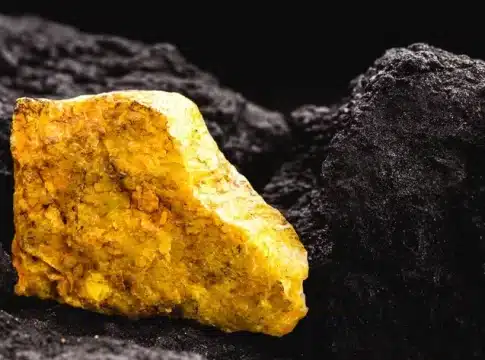Microsoft and UNDO Partner for 15,000 Tons of Carbon Removal Using Enhanced Rock Weathering!
Microsoft and rock weathering pioneer UNDO announced a mega deal to permanently remove 15,000 tons of CO2 from the atmosphere. It is an extension of last year’s contract, which was certainly comparatively smaller in size. Significantly, Microsoft will also enhance UNDO’s ongoing scientific research in the enhanced rock weathering (ERW) field.
Microsoft Fuels UNDO’s Carbon Removal Ambition
In 2023, UNDO started working with Microsoft to remove 5,000 tons of CO₂ by spreading 25,000 tons of basalt in the UK. This marked Microsoft’s first-ever Enhanced Rock Weathering (ERW) purchase. Now, the partnership has expanded.
Brian Marrs, Senior Director of Energy Markets at Microsoft remarked,
“Microsoft is committed to being carbon-negative by 2030. We are excited to support UNDO’s enhanced rock weathering carbon removal projects with co-benefits for soils, farmers, and rural communities. With this follow-on deal, we look forward to working with the UNDO team who will pioneer further deep science across different measurement techniques and at varying scales to deliver crucial ERW process data.”
LATEST: Microsoft’s 234,000 Carbon Credit Purchase Restores Mexican Rainforest
Technically speaking, UNDO will spread 65,000 tons of crushed rock on agricultural land, including 40,000 tons of basalt in the UK and 25,000 tons of wollastonite in Canada, to further reduce CO₂ emissions.
So, what is enhanced rock weather and what’s its role in carbon removal?
Understanding Enhanced Rock Weathering (ERW)
Natural rock weathering (NRW) is nature’s own way of removing carbon dioxide (CO₂) from the atmosphere and permanently storing it in rocks. It has been occurring for millions of years.
UNDO has defined it scientifically as,
“As rain falls through the atmosphere it combines with CO2 to form carbonic acid. When this dilute acid lands on our soils, the CO2 mineralizes and is safely stored as solid carbon. The geological process of rock weathering removes 1 billion tonnes of CO2 every year.”
However, this process can be enhanced/accelerated through human intervention. This is where UNDO comes into play and thus, they named it Enhanced Rock Weathering.
Source: UNDO
So, what exactly does the company do?
They speed up this natural process by spreading crushed silicate rock on farmland. This increases the rock’s surface area, allowing it to absorb more CO2. Instead of taking millions of years, the process is shortened to just decades. Once the reaction occurs, the CO2 is locked away for over 100,000 years.
Furthermore, as the volcanic rock breaks down, it releases nutrients like magnesium, calcium, potassium, and phosphorus that help crops grow and balance soil pH. This supports farmers by offering free soil improvements, creating green jobs, and strengthening local food systems.
Microsoft Supports Funding and Scientific Research for ERW
Microsoft’s partnership would help UNDO advance scientific research in measuring, reporting, and verifying (MRV) ERW-based carbon removal. This collaboration also provides crucial funding for field trials and monitoring sites in Ontario, including a research farm at the University of Guelph and UNDO’s main lab at Queen’s University in Kingston. Additionally, new trial sites will be established in the UK, including one at Newcastle University.
Jim Mann, CEO and Founder of UNDO, stated,
“This agreement with Microsoft signals to the market that enhanced rock weathering can deliver scalable carbon removal. With Microsoft’s continued support, we can enhance our research and data-gathering capabilities.”
Canada: UNDO’s Next Operational Hub
UNDO plans to expand its North American operations in Canada as it is becoming a strategic center for carbon removal. It has chosen Wollastonite as a mining partner for its fast-weathering feedstock for quicker data collection and optimizing the ERW process.
The company is primarily targeting rural communities. It is supporting the farmers facing challenges from climate change by providing crushed rock for free. At present it is operating in Southeast Ontario and plans to expand in Québec. This move will allow them to spread millions of tons of silicate rock each year, taking a crucial step toward large-scale carbon removal operations.
How is UNDO Raising the Bar for its ERW Carbon Removal Method?
We can comprehend that UNDO is committed to scaling its operations globally. The company gathers high-quality data from global partners and develops methods to measure carbon removal in different regions through strong partnerships and advanced technology.
Nonetheless, it has to demonstrate that ERW is a reliable, standard, and measurable method for permanent carbon removal.
Most significantly UNDO has partnered with Puro.earth, a top carbon removal registry, to establish Enhanced Rock Weathering (ERW) as an ICROA-accredited carbon removal method. But the company thinks this is not enough. This is why they are partnering with independent climate scientists and standard agencies to create the first methodology for ERW validation under ISO-14064. This groundbreaking effort is shaping new protocols for global ERW projects.
Similarly, with Microsoft as its partner, it can demonstrate itself as a reliable and trustworthy company to invest in. Such partnerships are also vital for funding in-depth scientific research and MRV processes.
The Intergovernmental Panel on Climate Change (IPCC) has announced that the world needs to remove 10 billion tonnes of CO₂ from the atmosphere each year by 2050 to avert climate change damages. UNDO believes ERW could help eliminate about 4 billion tonnes of CO₂ annually, contributing to 40% of this goal. This clearly illustrates that the deal with Microsoft is truly and undeniably valuable!
FURTHER READING: Ørsted Secures Major Carbon Removal Deal with Microsoft
The post Microsoft and UNDO Partner for 15,000 Tons of Carbon Removal Using Enhanced Rock Weathering! appeared first on Carbon Credits.



